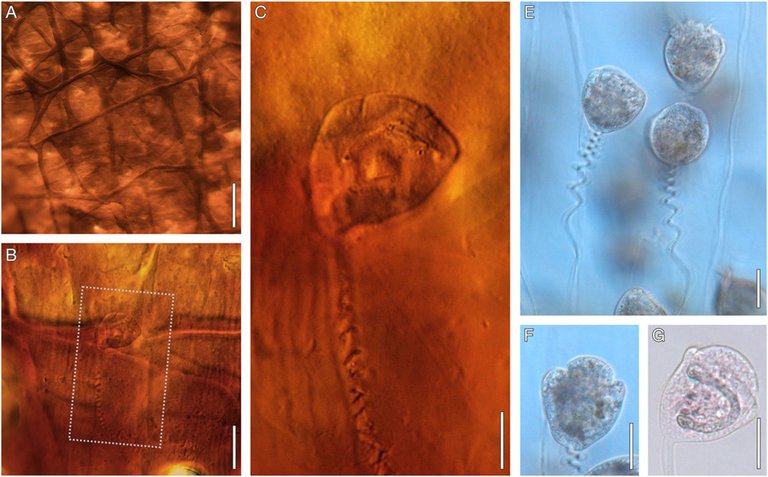Fossil of a 200 million year protozoo in a cocoon

The finding that has just been published in the journal PNAS shows that cocoon, in addition to being a refuge for eggs and larvae of various animals, can be an unbeatable deposit of fossil microorganisms of millions of years. They discover the fossil of a ciliate that has remained protected for 200 million years in the hood of a sheet.
Earthworms and creatures place eggs under a hood. The cappular material flows in liquid state and hardens. In fact, like amber, this fossil ciliate was trapped in this trap; in the cocoon hidden by a Triassic creature. The fossil has a body of 25 µm and a shortening and inside you can see a horseshoe core with the same characteristics as the current ciliated Vorticellas.
Vorticellids are very abundant in aquatic ecosystems around the world, but until now their fossil has never been found. In fact, it is very difficult for soft body microorganisms to become fossils. The buds of the fir, on the other hand, have exceptional characteristics to become fossils, which are common from the Triassic. In addition to this ciliate, in these cocoons few other microorganisms and spores have been found, but so far very little has been studied. Thus, researchers who have made this new discovery have predicted that these cocoons can be a very valuable source of information from ancient microorganisms.
Buletina
Bidali zure helbide elektronikoa eta jaso asteroko buletina zure sarrera-ontzian











